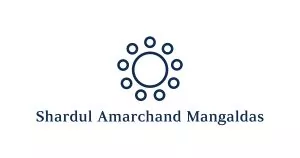- within Corporate/Commercial Law, Antitrust/Competition Law and Energy and Natural Resources topic(s)
- in United States
- with readers working within the Property and Law Firm industries
SAT re-affirms the 'Clean Slate Theory' in respect of penalties imposed by SEBI1
Recently, the Securities Appellate Tribunal in its judgment in M/s. Tata Steel Limited v. The Securities and Exchange Board of India2, re-affirmed the 'Clean Slate Theory' as enshrined in Section 31(1) of the Insolvency and Bankruptcy Code, 2016 ("IBC"). The SAT quashed the Order dated 14th February, 2022 of the Adjudicating Officer ("AO") passed in the matter of Bhushan Steel Limited ("BSL"), which imposed a penalty of Rs. 2 lakhs for violation of Regulations 51(1), 51(2) read with Part B of Schedule III (Clauses A1, A4, A9), 52(4), 52(5), 54(2), 57(1) and 13(3) of the Securities and Exchange Board of India (Listing Obligations and Disclosure Requirements) Regulations, 2015 ("LODR Regulations"). While doing so, the SAT held that new management of a company, which comes in pursuant to a corporate insolvency resolution process under the IBC ("CIRP"), cannot be held liable for actions of the previous management.
Factual Matrix
On the instructions of the Reserve Bank of India ("RBI") by its circular dated 13th June, 2017, the State Bank of India filed an application for initiation of insolvency proceedings under the IBC against BSL. The petition was admitted by the National Company Law Tribunal and moratorium as per the IBC was ordered on 26th July, 2017. A resolution plan submitted by a wholly owned subsidiary of Tata Steel was subsequently approved on 15th May, 2018, whereby the management of BSL was taken over by Tata Steel. With effect from 27th November, 2018, BSL was renamed as Tata Steel BSL Limited ("Tata Steel BSL").
On 18th October, 2019, SEBI had issued a show cause notice ("SCN") observing that BSL had not made requisite disclosures under the LODR Regulations in respect of certain listed Non-Convertible Debentures issued by BSL during 2008 to 2013 ("NCDs"). Particularly, the following allegations were made in the SCN:
- BSL had failed to disclose default in respect of payment of interest/ principal emanating from the NCDs. Further, BSL failed to disclose expected defaults in respect of the NCDs. The said failures to disclose constitute violations of Regulation 51(1) of LODR Regulations and Regulation 51(2) read with Part B of Schedule III of LODR Regulations respectively. Furthermore, BSL had failed to make requisite disclosures in half yearly/ annual financial results which constitutes violation of Regulation 52(4) of the LODR Regulations.
- BSL had failed to make the requisite disclosures to the stock exchange under Regulations 54(2) and 57(1) of the LODR Regulations.
- BSL had failed to submit the half-yearly compliance certificate from March, 2016 to September, 2018, thereby violating Regulation 40(1) read with Regulation 40(9) of LODR Regulations.
- BSL had failed to submit quarterly statement with respect to investor complaints from December, 2015 to June, 2018 thereby violating Regulation 13(3) of LODR Regulations.
- BSL had failed to submit the half yearly compliance certificate from March, 2016 to September, 2018, violating Regulation 7(3) of LODR Regulations.
During the hearings before the AO, the following submissions were made:
- Tata Steel BSL (i.e. the resultant entity pursuant to the approval of the resolution plan) is virtually a new with a new management. Most of the allegations in the SCN pertain to pre-CIRP period, when BSL was under old management or to the period when CIRP was ongoing;
- Tata Steel BSL cannot be penalized for the actions of the earlier management;
- The resolution plan approved by NCLT is binding on SEBI as well under Section 31(1) of the IBC, and all the claims against BSL were frozen by the NCLT;
- The essence of IBC would be defeated if the new management of BSL is held responsible for the omissions of the earlier management.
Having heard the submissions made by Tata Steel BSL, the AO made the following observations in Order dated 14th February, 2022:
- The present proceedings were initiated against BSL (now Tata Steel BSL) as a going concern, which is required to fulfill the regulatory obligations and make requisite disclosures;
- Contentions in relation to concluded or ongoing IBC proceedings have been raised in various other matters and the decisions in this regard passed by the SAT in the maters of Monnet Ispat (Appeal No. 238 of 2020), Alok Industries (Appeal No. 300 of 2020) and Raj Oil Mills Ltd. (Appeal No. 54 of 2019) have been challenged by SEBI before the Supreme Court. The said challenges are pending. While the purpose of the present proceedings is to determine if the company has violated any securities laws, the implementation of the order being passed would be subject to decision of the Supreme Court of India in the aforesaid Appeals;
- On merits, the AO concluded that Tata Steel BSL violated Regulations 51(1), 51(2) read with Part B of Schedule III (Clauses A1, A4, A9), 52(4), 52(5), 54(2), 57(1) and 13(3) of LODR Regulations. Further, the AO found that the violations of Regulations 40(10) read with 40(9) of LODR Regulations have been proved for quarters ending March, 2016, September, 2018 and December, 2018, and imposed penalty of Rs. 2 lakhs.
SAT's view in Tata Steel and Monnet Ispat matters
The order passed by the AO was challenged before the SAT by Tata Steel. The SAT noted that the BSL had gone into insolvency in July, 2017 and in view of the decision of the SAT in Monnet Ispat (Supra), no penalty can be levied on the new management which came into the picture only on 18th May, 2018. The SAT also held that violation if any committed during the pre-CIRP period was of the previous management which cannot be imposed on the new management. Since no charge was levied against the company for quarter ending September, 2018 and December, 2018, no penalty can be imposed for violations pertaining to the said period.
The SAT in the judgment in Monnet Ispat (Supra) held that the resolution plan is binding on all creditors, including the central government, state government and local authority, as is apparent from perusal of Section 31(1) of IBC and the judgment of the Hon'ble Supreme Court in Committee of Creditors of Essar Steel India Limited v. Satish Kumar Gupta3. The SAT relied on the judgment of the Hon'ble Rajasthan High Court in the case of Ultra Tech Nathdwara Cement Ltd. v. Union of India4 and the speech of the Finance Minister in Rajya Sabha to conclude that resolution plan once approved by the appropriate authority is binding on SEBI as well. Therefore, once the resolution plan has been approved, SEBI is barred from issuing a SCN or passing an order of penalty pertaining to period before the CIRP.
Therefore, the SAT has re-affirmed its decision in Monnet Ispat (Supra) to conclude that it is not open for SEBI to issue show cause notices for violations pertaining to pre-CIRP period, once the resolution plan has been approved by the NCLT.
Analysis and way forward
In both decisions, namely Tata Steel and Monnet Ispat, the SAT has placed reliance on Section 31(1) of the IBC which provides that a resolution plan, once approved, is binding on "the corporate debtor and its employees, members, creditors, including the Central Government, any State Government or any local authority to whom a debt in respect of the payment of dues arising under any law for the time being in force, such as authorities to whom statutory dues are owed, guarantors and other stakeholders involved in the resolution plan". The rationale behind the provision is to provide a 'clean state' to the new management of the corporate debtor so that once the new management takes control, erstwhile creditors and claims against the corporate debtor do not resurface thereby incentivizing resolution applicants to acquire business through the IBC route.
Interestingly, in both Tata Steel and Monnet Ispat matters, the SAT placed reliance on Section 31(1) of the IBC to hold that no penalty can be imposed on the company after the approval of the resolution plan. To determine whether such reliance on Section 31(1) is correct, the provision should be analysed further. The Section provides that the resolution plan is binding upon the government or authority to whom a 'debt in respect of the payment of dues arising under any law for the time being in force' is owed. The Section includes within its ambit authorities to whom 'statutory dues' are owed. 'Debt' is defined under Section 3(11) of the IBC to mean 'a liability or obligation in respect of a claim which is due from any person and includes a financial debt and operational debt'. 'Operational debt' is defined under Section 5(21) of the IBC to mean 'a claim in respect of the provision of goods or services including employment or a debt in respect of the payment of dues arising under any law for the time being in force and payable to the Central Government, any State Government or any local authority'. Claim is in turn defined under Section 3(6) of IBC to mean '(a) a right to payment, whether or not such right is reduced to judgment, fixed, disputed, undisputed, legal, equitable, secured, or unsecured; (b) right to remedy for breach of contract under any law for the time being in force, if such breach gives rise to a right to payment, whether or not such right is reduced to judgment, fixed, matured, unmatured, disputed, undisputed, secured or unsecured.' There is no separate definition of 'statutory dues' under the IBC.
The question to be asked, therefore, is whether a penalty imposed for violation of a law falls strictly within the scope of Section 31(1), or within the definitions of 'debt', 'operational debt' or 'claim', or whether it amounts to 'statutory dues'. SAT, by way of its decisions in Tata Steel and Monnet Ispat appears to have answered the first question in the affirmative and has proceeded on the basis of Section 31(1) to hold that since a resolution plan is approved, the corporate debtor cannot be required to pay penalty imposed upon it by SEBI. The judgments of the SAT are however silent as to whether penalty would fall under the definition of 'debt', 'operational debt' or 'claim'.
Another question that arises is whether SAT could have relied on the provisions of Section 32A of the IBC to provide a 'clean state' to the new management of the corporate debtor. Section 32A essentially provides that the liability of a corporate debtor for an offence committed prior to the commencement of the CIRP shall cease if the resolution plan results in change in the management or control of the corporate debtor. In Monnet Ispat, the appellant appears to have relied on this provision however, from the text of the judgments, it may be noted that SAT did not base either of its decisions on this provision. The SAT therefore did not opine on whether penalty imposed by SEBI would fall within the scope of 'liability of the corporate debtor for an offence' committed by the corporate debtor.
It can be concluded from the above discussion that while the decisions of the SAT uphold the 'Clean Slate Theory', there is a lack of clarity on the provision under which SAT could hold that penalty cannot be imposed upon the corporate debtor for a violation committed prior to the approval of the resolution plan. It is possible that this issue will eventually be put to rest, either by the Supreme Court or by the legislature by carrying out necessary amendments.
Even otherwise, the issue as to whether the new management of the company can be penalized for wrongs committed by the erstwhile management of the company prior to initiation of CIRP also remains to be finally decided.
Footnotes
1. The article is co-authored by Vaibhav Singh (Partner), Radhika Indapurkar (Principal Associate) and Rudra Deosthali (Associate) from Shardul Amarchand Mangaldas & Co.
2. Appeal No. 180 of 2022, Judgment dated 20th December, 2022
3. (2020) 8 SCC 531
4. (2020) SCC OnLine Raj 1097
The content of this article is intended to provide a general guide to the subject matter. Specialist advice should be sought about your specific circumstances.



